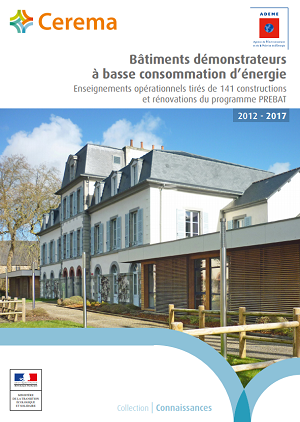This article is part of the folder : Bâtiments démonstrateurs à basse consommation d’énergie : Enseignements opérationnels du programme PREBAT
See the 7 news related to this folder
141 of them were assessed, making it possible to learn lessons about real consumption, the factors that influence consumption, the solutions delivering the best performance and that are also practical, thermal comfort and resulting quality of use, as well as the costs. This publication prepared and published by Cerema sums up the lessons learned from this operation, and also indicates the financial impact of the implemented solutions and their economic profitability.
Since 2006, regions in mainland France and Reunion Island have supported the creation of nearly 3,000 low energy buildings, in order to develop highly effective architectural, technical and financial solutions. More than 200 of these buildings were instrumented to be able to measure their energy performance over a two year period. In addition, the tracking and assessment to which Cerema contributed included observations and surveys of residents, and more broadly of users, in order to better understand how the buildings are used once construction or renovation has been completed.
Every year, Cerema carries out capitalisation of the results of these tracking and assessment activities as the sample of assessed operations gradually grows, and produces a report structured by objectives. This report is for all stakeholders whether in renovation or construction. The capitalisation identifies lessons learned that improve the energy quality of buildings as well as the quality of use and services rendered. The current 2017 capitalisation report now comprises 141 assessments performed between 2012 and 2017.

The advantage of the sample is that it presents highly diverse low energy building construction and renovation operations (buildings with different uses, different types of improvement works).
The report presents the results of this experimentation, looking at different themes:
-
overall consumption, production and performance in terms of energy performance
-
Assessment of the meteorological conditions in the different regions where the buildings were monitored
-
Occupancy characteristics
-
Real energy performance of the building’s structure, linked to insulation
-
Energy performance of technical systems
-
Practices of stakeholders (building contractors and contracting authorities) with regard to energy performance
-
Thermal comfort and quality of use
-
Costs
In the folder : Bâtiments démonstrateurs à basse consommation d’énergie : Enseignements opérationnels du programme PREBAT

